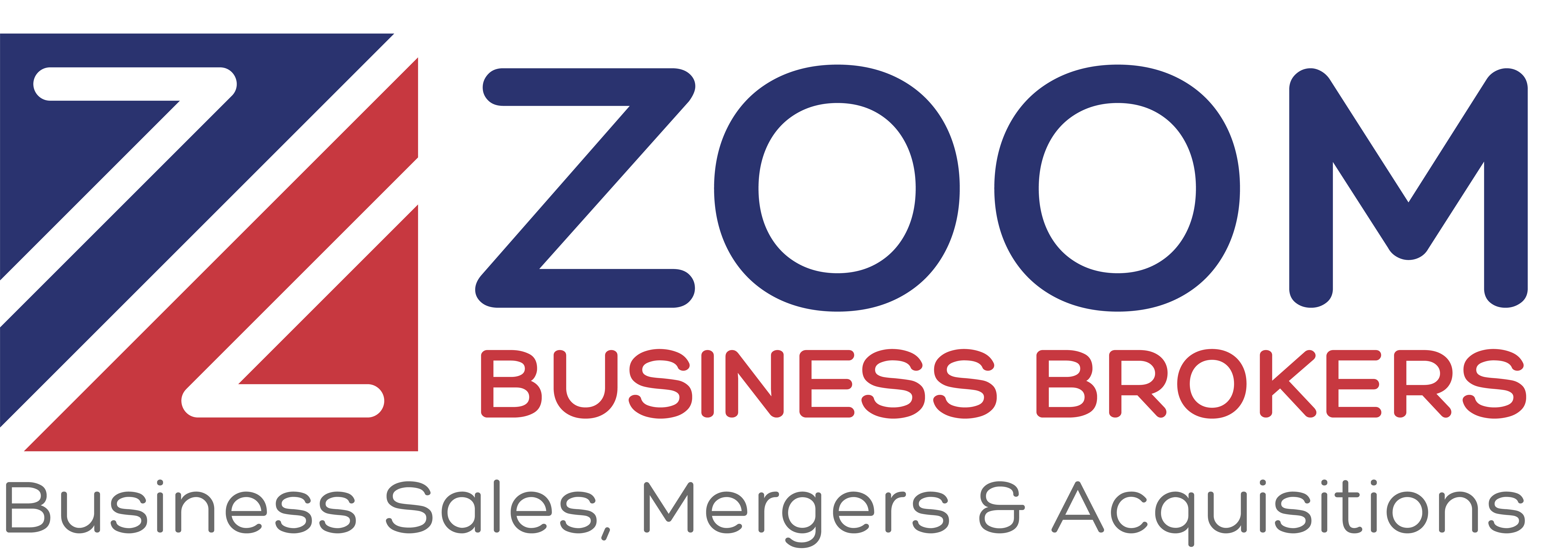
Common Reasons for Selling
It has been said that the sale of a business is usually event driven. Very few owners of businesses, whether small or large, wake up one morning and think, “Today I am going to sell my company.” It is usually a decision made after considerable thought and usually also prompted by some event. Here are a few common “events” that may prompt the decision to sell:
Boredom or “Burn-out” – Many business owners, especially those who started their companies and have spent years building and running them, find that the “batteries are starting to run low.”
Divorce or Illness – Both divorce and illness can cause a rapid change in one’s life. Either of these events, or a similar personal tragedy, can prompt a business owner to decide that selling is the best course of action.
Outside Investors – Outside investors may include family, friends, or just plain outside investors. These outside investors may be putting pressure on the owner/majority owner in order to recoup their investment.
No Heir Apparent – In this scenario, no family member has any interest in the business; and the owner has not groomed his or her successor. Unfortunately, in this event the owner often continues to run the business until he is almost forced to sell.
Competition is Around the Corner – In this scenario, the owner would have been better off selling prior to competition becoming an issue.
A “Surprise” Offer is Received – This may be about the only reason not truly event driven; an unsolicited offer is presented that is too good to pass up.
Everything is Tied Up in the Company – The owner/ founder sometimes becomes aware that everything he or she has is tied up in the business. In other words, all the eggs are in one basket.
Should Have Sold Sooner – Owning a small to midsize company (or even a large one) is not without its risks. A large customer goes under, suppliers decide to increase their prices, trends change, business conditions change, etc.
Surveys indicate that many small company owners do not have an exit strategy; so, when an event does strike, they are not prepared. Developing an exit strategy doesn’t mean the owner has to use it. What it does mean is that a strategy is ready when the owner needs it.
A professional intermediary can supply a business owner the real world information necessary not only to develop a plan, but also to know how to implement the plan when it becomes necessary.
© Copyright 2015 Business Brokerage Press, Inc.
Photo Credit: luanarodriquez via morgueFile
Read More
Deciphering Business Valuations: Navigating the Challenges

Valuing a business is an intricate process steeped in complexity. Often subject to the judgment of the assessor, it assumes that the provided information is accurate, posing unique challenges. This article explores the key challenges inherent in business valuations and offers insights into handling these hurdles effectively.
1. Navigating the Dilemma of Product Diversity
Firms offering a single product or service can often be more vulnerable than their multiproduct counterparts. The inherent risk is the potential change in market preference or disruptive elements affecting the product’s viability. Hence, companies are encouraged to explore product diversity to distribute risk and ensure a robust valuation.
2. Mitigating the Risks of Customer Concentration
Many small businesses rely heavily on a handful of major clients or customers. The loss of a key client can significantly impact the firm’s revenue and profitability, thereby affecting its valuation. Businesses can manage this risk by broadening their customer base, ensuring a stable flow of revenue, and improving their business valuation.
3. Unraveling the Value of Intangible Assets
Intangible assets like patents, trademarks, and copyrights often form a crucial part of a business’s value. However, the challenge lies in quantifying these assets accurately, given their intangible nature. Regardless, these assets can add significant value to a business, making it attractive to potential buyers, enhancing its overall valuation.
4. Contending with the Reliance on Critical Supply Sources
A company depending solely on a single supplier may secure a competitive edge due to cost-efficiency. However, this advantage could become a liability if the supplier’s situation changes, especially for international suppliers, where the risk of supply chain disruption is higher. To circumvent this risk, businesses should diversify their supply sources, ensuring operational continuity and a more robust business valuation.
5. Understanding the Implications of ESOP Ownership
Companies partially or fully owned by employees (ESOPs) can face unique valuation challenges. As ESOP-owned firms require an employee vote for significant decisions such as company sale, this can affect marketability and consequently, valuation. Therefore, it’s crucial for ESOP businesses to factor in this aspect and effectively communicate with their employee-owners when planning a sale.
6. Accounting for the Company/Industry Life Cycle
A business’s life cycle and industry trends significantly impact its valuation. Companies operating in declining industries may find their valuations adversely affected. Businesses should remain adaptive and innovative, ensuring they are not left behind in industry shifts and maintaining their value appeal.
7. Dealing with Additional Value Impactors
Several other factors can influence business valuation. These include outdated or unsalable inventory, reliance on short-term contracts, work-in-progress, and the need for third-party or franchise approvals for company sale. Recognizing and managing these factors can prevent unwelcome surprises during the valuation process.
In conclusion, business valuation is a multifaceted process, shaped by a multitude of factors beyond mere financials. By understanding these challenging elements and effectively managing them, businesses can secure an accurate valuation, paving the way for a successful sale. Understanding these issues isn’t just good practice—it’s an essential part of maximizing your business’s value and ensuring its ongoing success.
Read More
Considering Selling? Some Important Questions
Some years ago, when Ted Kennedy was running for president of the United States, a commentator asked him why he wanted to be president. Senator Kennedy stumbled through his answer, almost ending his presidential run. Business owners, when asked questions by potential buyers, need to be prepared to provide forthright answers without stumbling.
Here are three questions that potential buyers will ask:
- Why do you want to sell the business?
- What should a new owner do to grow the business?
- What makes this company different from its competitors?
Then, there are two questions that sellers must ask themselves:
- What is your bottom-line price after taxes and closing costs?
- What are the best terms you are willing to offer and then accept?
You need to be able to answer the questions a prospective buyer will ask without any “puffing” or coming across as overly anxious. In answering the questions you must ask yourself, remember that complete honesty is the only policy.
The best way to prepare your business to sell, and to prepare yourself, is to talk to a professional intermediary.
© Copyright 2015 Business Brokerage Press, Inc.
Photo Credit: DodgertonSkillhause via morgueFile
Read More
Is Your “Normalized” P&L Statement Normal?
Normalized Financial Statements – Statements that have been adjusted for items not representative of the current status of the business. Normalizing statements could include such adjustments as a non-recurring event, such as attorney fees expended in litigation. Another non-recurring event might be a plant closing or adjustments of abnormal depreciation. Sometimes, owner’s compensation and benefits need to be restated to reflect a competitive market value.
Privately held companies, when tax time comes around, want to show as little profit as possible. However, when it comes time to borrow money or sell the business, they want to show just the opposite. Lenders and prospective acquirers want to see a strong bottom line. The best way to do this is to normalize, or recast, the profit and loss statement. The figures added back to the profit and loss statement are usually termed “add backs.” They are adjustments added back to the statement to increase the profit of the company.
For example, legal fees used for litigation purposes would be considered a one-time expense. Or, consider a new roof, tooling or equipment for a new product, or any expensed item considered to be a one-time charge. Obviously, adding back the money spent on one or more of these items to the profit of the company increases the profits, thus increasing the value.
Using a reasonable EBITDA, for example an EBITDA of five, an add back of $200,000 could increase the value of a company by one million dollars. Most buyers will take a hard look at the add backs. They realize that there really is no such thing as a one-time expense, as every year will produce other “one-time” expenses. It’s also not wise to add back the owner’s bonuses and perks unless they are really excessive. The new owners may hire a CEO who will require essentially the same compensation package.
The moral of all this is that reconstructed earnings are certainly a legitimate way of showing the real earnings of a privately held company unless they are puffed up to impress a lender or potential buyer. Excess or unreasonable add backs will not be acceptable to buyers, lenders or business appraisers. Nothing can squelch a potential deal quicker than a break-even P&L statement padded with add backs.
© Copyright 2015 Business Brokerage Press, Inc.
Photo Credit: DodgertonSkillhause via morgueFile
Read More
Do You Have an Exit Plan?
“Exit strategies may allow you to get out before the bottom falls out of your industry. Well-planned exits allow you to get a better price for your business.”
From: Selling Your Business by Russ Robb, published by Adams Media Corporation
Whether you plan to sell out in one year, five years, or never, you need an exit strategy. As the term suggests, an exit strategy is a plan for leaving your business, and every business should have one, if not two. The first is useful as a guide to a smooth exit from your business. The second is for emergencies that could come about due to poor health or partnership problems. You may never plan to sell, but you never know!
The first step in creating an exit plan is to develop what is basically an exit policy and procedure manual. It may end up being only on a few sheets of paper, but it should outline your thoughts on how to exit the business when the time comes. There are some important questions to wrestle with in creating a basic plan and procedures.
The plan should start with outlining the circumstances under which a sale or merger might occur, other than the obvious financial difficulties or other economic pressures. The reason for selling or merging might then be the obvious one – retirement – or another non-emergency situation. Competition issues might be a reason – or perhaps there is a merger under consideration to grow the company. No matter what the circumstance, an exit plan or procedure is something that should be developed even if a reason is not immediately on the horizon.
Next, any existing agreements with other partners or shareholders that could influence any exit plans should be reviewed. If there are partners or shareholders, there should be buy-sell agreements in place. If not, these should be prepared. Any subsequent acquisition of the company will most likely be for the entire business. Everyone involved in the decision to sell, legally or otherwise, should be involved in the exit procedures. This group can then determine under what circumstances the company might be offered for sale.
The next step to consider is which, if any, of the partners, shareholders or key managers will play an actual part in any exit strategy and who will handle what. A legal advisor can be called upon to answer any of the legal issues, and the company’s financial officer or outside accounting firm can develop and resolve any financial issues. Obviously, no one can predict the future, but basic legal and accounting “what-ifs” can be anticipated and answered in advance.
A similar issue to consider is who will be responsible for representing the company in negotiations. It is generally best if one key manager or owner represents the company in the sale process and is accountable for the execution of the procedures in place in the exit plan. This might also be a good time to talk to an M&A intermediary firm for advice about the process itself. Your M&A advisor can provide samples of the documents that will most likely be executed as part of the sale process; e.g., confidentiality agreements, term sheets, letters of intent, and typical closing documents. The M&A advisor can also answer questions relating to fees and charges.
One of the most important tasks is determining how to value the company. Certainly, an appraisal done today will not reflect the value of the company in the future. However, a plan of how the company will be valued for sale purposes should be outlined. For example, tax implications can be considered: Who should do the valuation? Are any synergistic benefits outlined that might impact the value? How would a potential buyer look at the value of the company?
An integral part of the plan is to address the due diligence issues that will be a critical part of any sale. The time to address the due diligence process and possible contentious issues is before a sale plan is formalized. The best way to address the potential “skeletons in the closet” is to shake them at this point and resolve the problems. What are the key problems or issues that could cause concern to a potential acquirer? Are agreements with large customers and suppliers in writing? Are there contracts with key employees? Are the leases, if any, on equipment and real estate current and long enough to meet an acquirer’s requirements?
The time to address selling the company is now. Creating the basic procedures that will be followed makes good business sense and, although they may not be put into action for a long time, they should be in place and updated periodically.
© Copyright 2015 Business Brokerage Press, Inc.
Photo Credit: dhester via morgueFile
Read More